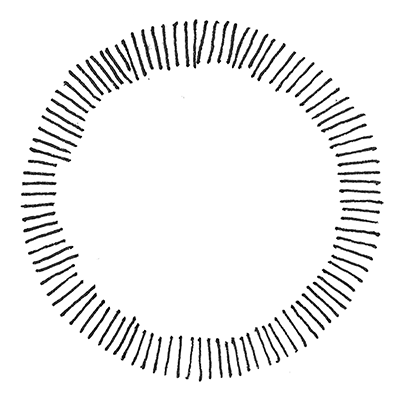Potato, citrus and junk prints
This is one of many practices contained in Growing Whole Children in the Garden. Potato printing is not a precise art. Like all hand-printing, its charm comes from the variations in texture that occur. Some older children are frustrated by surprise results. If you like, show them some pictures of woodcut prints in art books or from the internet, to see how printing is a special kind of art that always has variations.
Materials for print-making:
A bag of potatoes, or old potatoes from the kitchen (any kind)
Other kitchen objects and/or citrus fruits for printing (optional)
Paper towels
Tempera paint in desired colors
Sharp knives (for adult use with small children)
Paper plates or small trays for the paint
Paper such as cardstock or watercolor paper for cards or gift tags, newspaper for wrapping paper, any other type of paper you would like to experiment with (glossy papers may not take paint well)
If you want to mail cards, envelopes that fit the cards you cut (you can cut the paper to fit the envelopes you have)
What we'll be doing:
Cut potatoes in half, being careful to make the cut straight. Your cut will be your printing surface. Then, with a sharp knife, cut a design out of the potato faces or leave the design you want and cut away the rest of the potato. It is easy to make hearts, flowers, suns, spirals, and other simple designs. Avoid complex designs.
Look around the kitchen, if you like, for other objects that might make nice prints. Pencil erasers make a nice dot. Potato mashers are great, and corks make a larger dot. Use your imagination and try things.
Mix tempera paint with a little bit of water. Make a “sponge” from a pile of paper towels cut to fit your paper plate, and pour the paint onto it. This will help the paint to print more evenly.
Practice printing on scratch paper to see what works and how much paint to put on the potatoes. Often the best image results from the second time you print with the same paint dip. You can print several times with one dip, but each print will get dimmer.
If you are using several colors, keep certain printing objects in each color. If children move them around, you will get muddy colors.
Start making prints! This activity is good for the whole family, so you will probably want to make quite a few.
Let cards dry for at least a day, since the tempera is often thick or uneven. If you like, decorate cards further by drawing on them. Otherwise, write your messages and send off your unique cards! Grandparents will love them!

